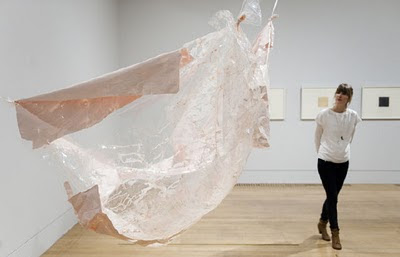 I was having a lengthy creative discussion with a friend the other day at a party (I seem to always attract such discussion...) and we were talking about art in two categories: the ridiculous and the serious. Without trying to draw a distinct dichotomy between the two, I do believe that art tends to be one over the other. For instance, Rachel Whiteread's sculptures brings a sombre pondering that far outweighs the inherent playfulness of her three-dimensional forms (refer to Judenplatz Holocaust Memorial, House).
I was having a lengthy creative discussion with a friend the other day at a party (I seem to always attract such discussion...) and we were talking about art in two categories: the ridiculous and the serious. Without trying to draw a distinct dichotomy between the two, I do believe that art tends to be one over the other. For instance, Rachel Whiteread's sculptures brings a sombre pondering that far outweighs the inherent playfulness of her three-dimensional forms (refer to Judenplatz Holocaust Memorial, House).On the other front, a polarisation to ridiculousness exists. Controversial, light-hearted yet provocative... there is many a term to describe such art. I want to introduce a Ellen Kooi who seems to grow a Narnian frenzy out of her images. I wonder if her intention was barely a playful one, or if the images are meant to be interpreted in more the 'serious' side. In the eye of the beholder, I suppose.












